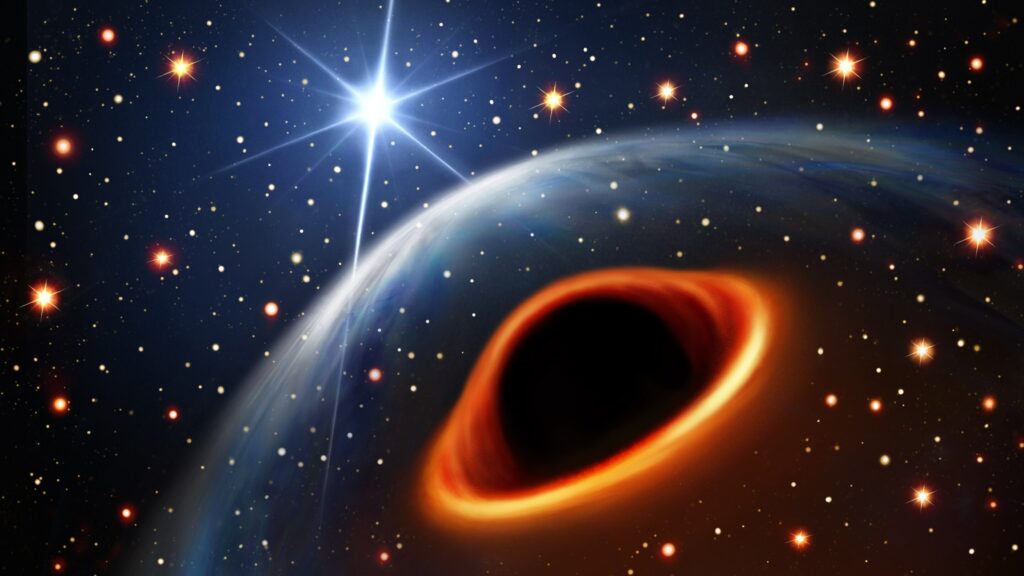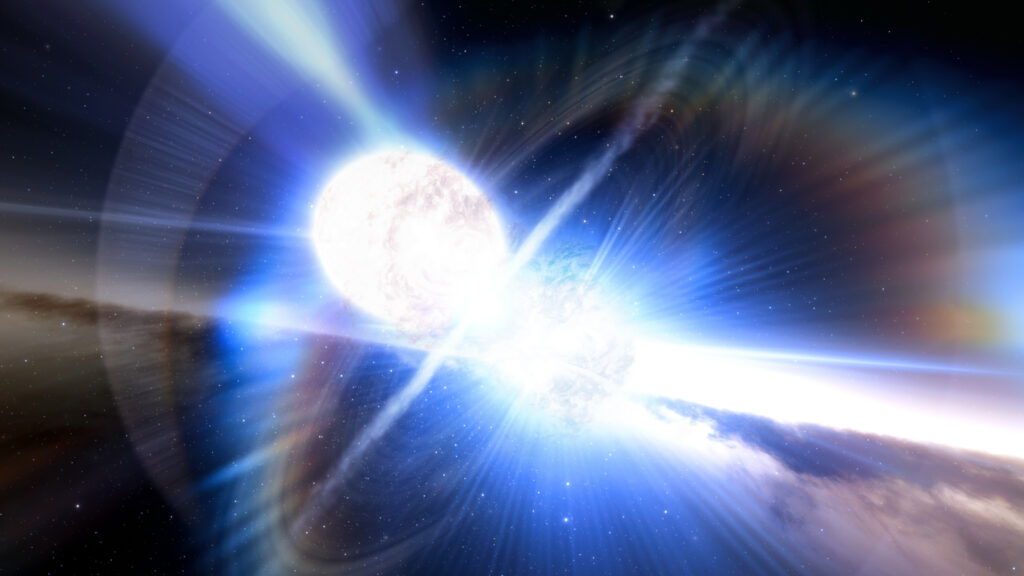An international group of astronomers has announced the discovery of a mysterious object in the Milky Way. It is heavier than the heaviest known neutron stars and, at the same time, lighter than the lightest known black holes.

The unknown object is in orbit around the millisecond pulsar PSR J0514−4002E, which rotates at a speed of 170 revolutions per second. It is located in the globular cluster NGC 1851, which is 40 thousand light-years away from Earth.
The data available to astronomers suggests that both bodies in this pair are ultra-compact objects. Their total mass is 3.887 times the mass of the Sun. At the same time, the mass of the companion neutron star lies in the range from 2.09 to 2.71 solar masses.
Limits of the masses of neutron stars and black holes
This find is of interest for the following reason. The fact is that the maximum possible mass of a neutron star is limited by the so-called Oppenheimer-Volkoff limit. According to recent estimates, its boundary is 2.2 times the mass of the Sun. If a neutron star overcomes it, it collapses and most likely forms a black hole.
At the same time, very rapidly rotating neutron stars are believed to be able to overcome this limit by about 18-20%. However, as soon as their speed decreases below a certain limit value, they collapse. At the same time, in reality, astronomers have not yet been able to find black holes with masses less than 3.3 times the mass of the Sun. This difference between theory and observational results is known as the “black hole mass gap.”

That is why the discovery is so important. Astronomers have either managed to find the heaviest known neutron star, or the lightest black hole. The researchers admit that the mysterious companion of the pulsar was formed as a result of the collision of two neutron stars, which could explain its abnormal mass.
In any case, according to scientists, this system is a unique laboratory. It will allow us to test the calculations of the theory of relativity and conduct research on the properties of matter in the most extreme conditions in the universe.
According to https://phys.org
Follow us on Twitter to get the most interesting space news in time
https://twitter.com/ust_magazine


